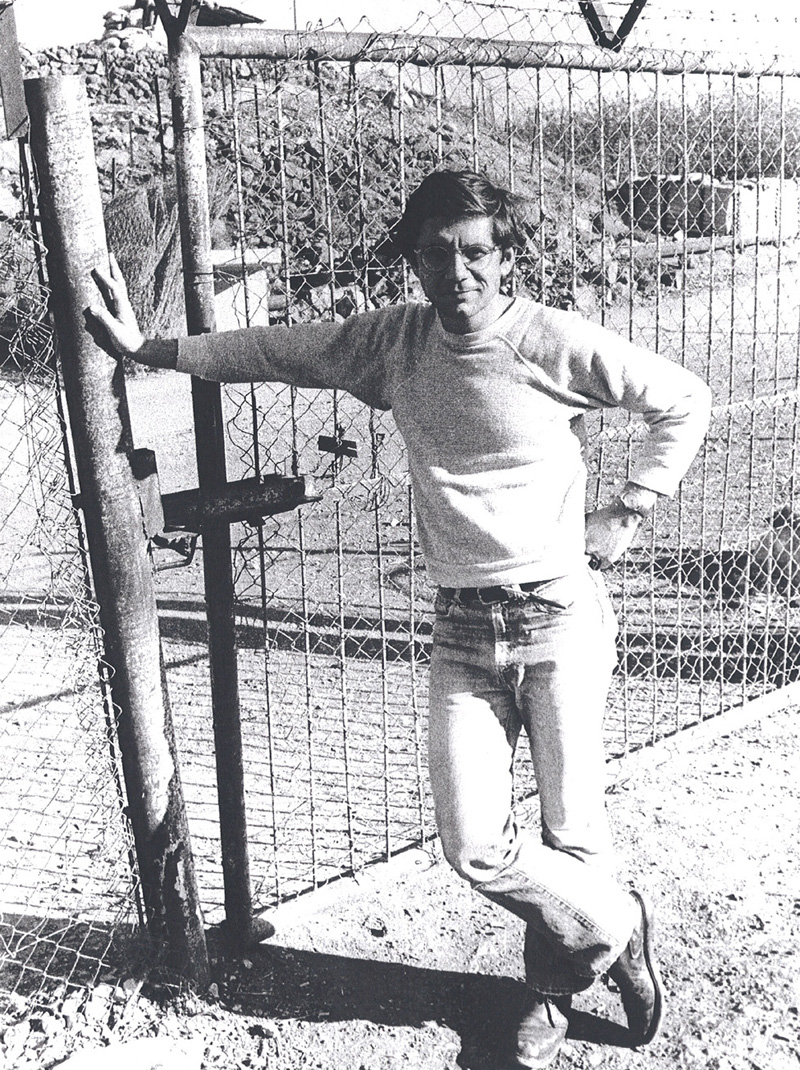Steve Hindy: Homebrewing in the Middle East
My first encounter with homebrewed beer was an unusual one. It happened in 1982 when I was the Middle East correspondent for The Associated Press, based in Cairo, Egypt. I had moved to Cairo from Beirut in August 1981 after a couple of crazy years covering the wars in Lebanon, Iraq and Iran. No sooner did I arrive in Cairo that it got crazy there, too. In October 1981, I was sitting behind Egyptian President Anwar Sadat when he was assassinated at a parade in Cairo.
But back to the beer.
I got a meeting at the U.S. Embassy with Jim Hastings, the inspector-general of the U.S. AID program in Egypt. I was working on a story about America’s $2.3 billion annual aid program. It is not easy to give away that much money every year. Hastings had some good stories about abuses of the program. After I interviewed him, he asked me what I thought of Egypt’s national beer, Stella (no relation of the Belgian beer of the same name), which came in 750-ml bottles.
“Well, it’s kind of hit and miss,” I said. “Some bottles taste OK. Some are undrinkable. Some people say they put formaldehyde in the beer as a preservative. Mummified beer. I do find my lips go numb after a couple of bottles.”
“I don’t drink that stuff,” Hastings said. “I make my own.”
“Really,” I said. “Tell me more.”
Hastings explained that he had just done a three-year stint in Saudi Arabia, one of the countries in the Middle East where alcoholic beverages are strictly forbidden. He said he and the other Foreign Service officers attached to the embassy in Riyadh were able to get ingredients for homebrewing in the diplomatic mail. Apart from work, there is not a lot to do in Saudi Arabia. Hastings said he and his friends spent a lot of time making beer in their kitchens—light beers, amber beers, porters and stouts.
As I got to know Hastings better, he treated me to some of his homebrew. It was excellent, and I was envious. But I had no access to malt extract or hops.
A couple of years later, AP announced it needed me in Manila, the Philippines, because President Ferdinand Marcos was in trouble. I was very excited about a new posting. But my wife, Ellen Foote, declared she had had enough of following me from one trouble spot to another. We had our first child in Beirut and the second in Cairo. “I am not taking these kids to Manila,” she said resolutely.
We returned to New York in June 1984 and settled in Park Slope, Brooklyn, an up-and-coming neighborhood. I left The AP for a job on Newsday’s foreign desk. My colleagues at the AP, led by a guy named Mark Porubcansky, who would go on to work in Moscow, had a going-away party for me and gave me a very nice homebrewing kit. Newsday was a great place to work, but I missed the excitement of the Middle East. I started brewing beer at home on a fairly regular basis. I made amber ales, porters and stouts, standard beginner homebrew styles. I bought Charlie Papazian’s Complete Joy of Homebrewing.
My beers were good, but not great. I got to know the guys in the New York City Homebrewers Guild, including one of the founders, Garrett Oliver. He made great beer.
I started reading about the micro-brewing movement that was gaining steam in the West. In the East, I read about Newman’s Albany Amber Beer and Matthew Reich’s Old New York Brewing Co. with its New Amsterdam beer. I started dreaming of starting a brewery in Brooklyn, a part of New York City that had been home to more than 45 brewers in the 1890s. Eventually, my downstairs neighbor in Brooklyn, Tom Potter, a junior banker at Chemical Bank, and I quit our jobs, raised $500,000 from family, colleagues and friends, and started Brooklyn Brewery in March 1988.
In 1989, Papazian attended an Oktoberfest party at our warehouse in Brooklyn. He signed my copy of his book, “Relax, have a homebrew, and a Brooklyn Lager too.”
Years later, at a World Beer Cup awards dinner in New York City, I was sitting at a table telling Fritz Maytag my story. I told Fritz I since had learned that the Saudi royal family did not ban alcoholic beverages until 1954 when American oil workers poured into the country to develop the oil fields. I had read somewhere that the Saudis objected to the Americans serving alcoholic beverages to the locals, so they issued the ban. When they did, the Arabian American Oil Co., ARAMCO, issued a pamphlet telling its employees how to brew beer at home.
A young man at our table said, “That is a true story, and I have a copy of the pamphlet.” A few weeks later, he sent me a copy. On the cover was a convoluted title that seemed to me to be an effort to conceal the contents of the pamphlet. Or perhaps it was a parody of the flowery circumlocutions of the Arabic language.
This column appears in the September 2014 issue of All About Beer Magazine. Click here for a free trial of our next issue.
Steve Hindy
Steve Hindy is co-founder of The Brooklyn Brewery and the author of The Craft Beer Revolution: How a Band of Microbrewers Is Transforming the World’s Favorite Drink.



Leave a Reply